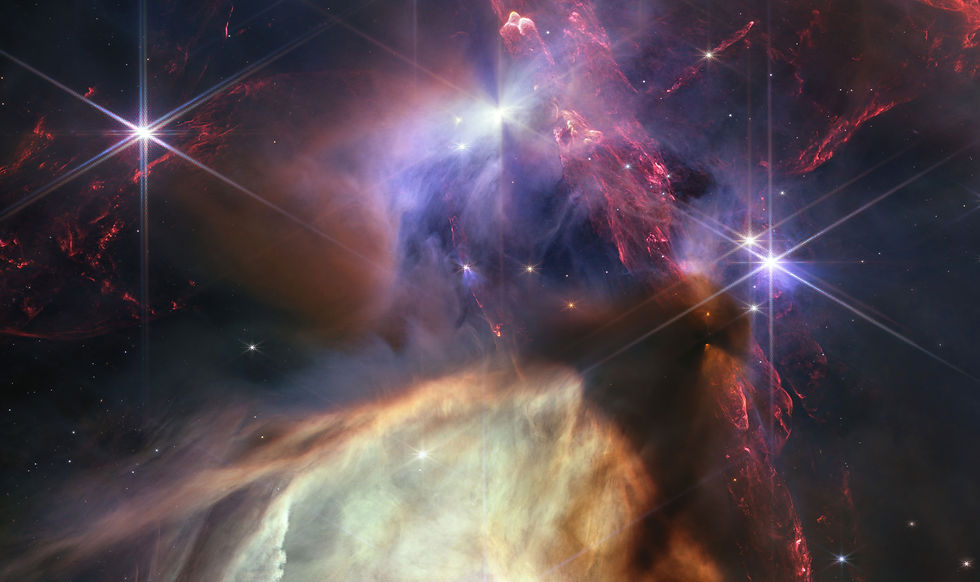

Image: NASA, ESA, CSA, STScI, Pontoppidan
First JWST Observations
Redshift | JADES-GS-z14-0 | Lambda CDM | Near-infrared
With a 6.5m gold-coated primary mirror, and designed to observe in the infrared, the James Webb Space Telescope (JWST) is perfect for capturing the 13bn year-old light of ancient galaxies. In the competition to find the earliest galaxy, some have been observed that are so old that they challenge the standard model of cosmology.
JWST is also able to reveal details inside dense nebula and protoplanetary clouds of gas and dust which infrared light can penetrate more easily than visible light. This allows it to examine the “hidden universe” of star and planet formation that is not visible to other telescopes.
Finally, JWST's observations of objects in the Solar System have proven so successful that The Outer Planet Atmosphere Legacy team hope to have it accompany the Hubble Space Telescope in their annual tour of the outer planets.


